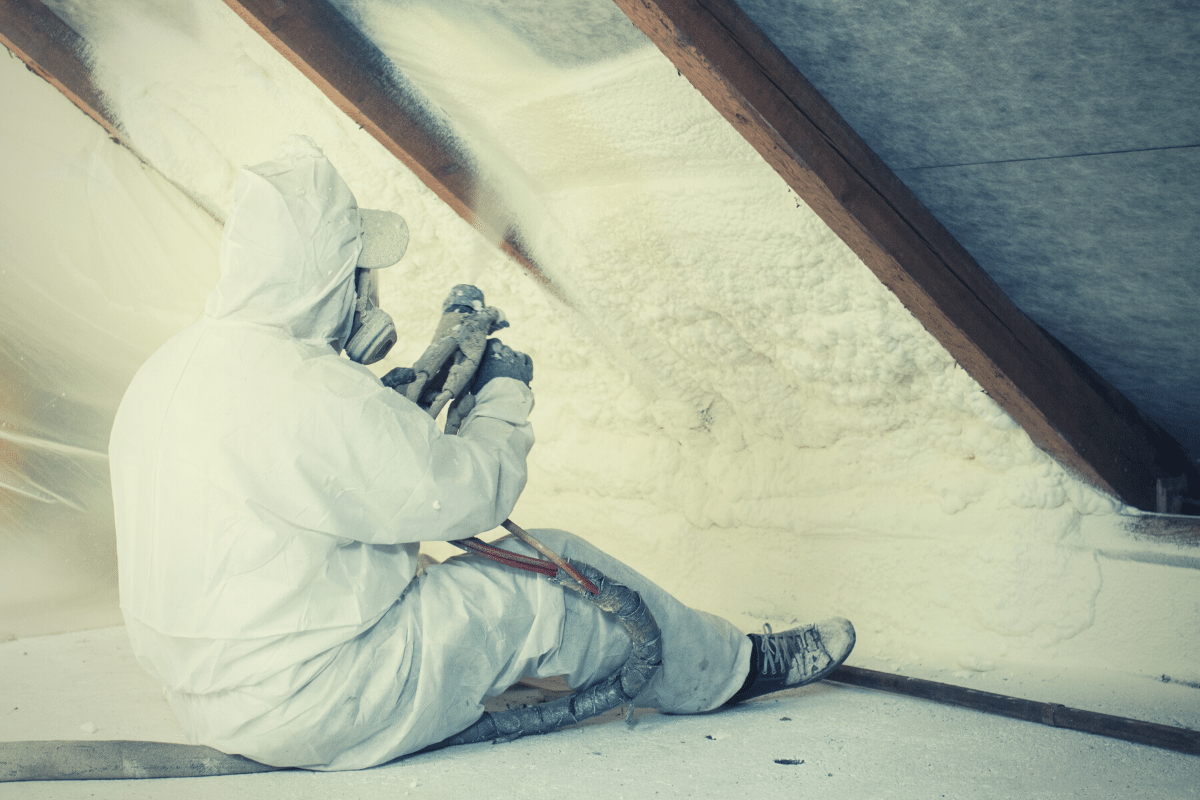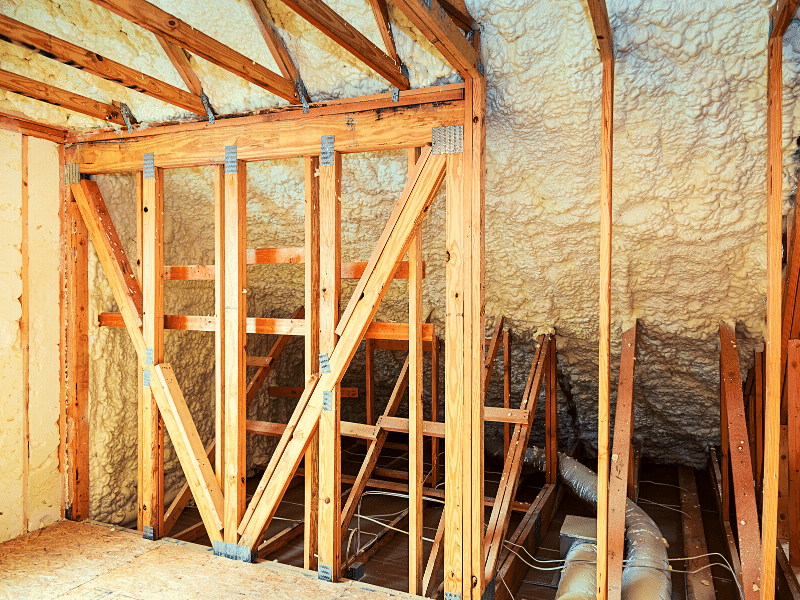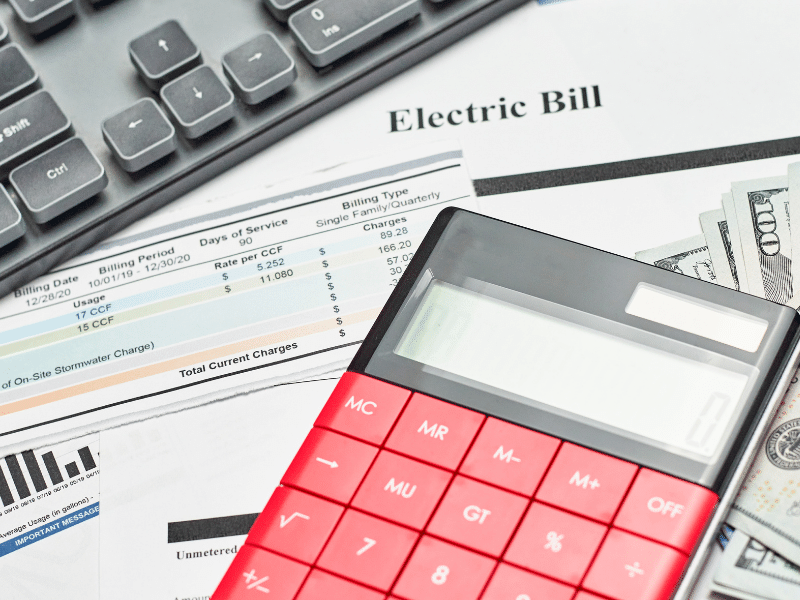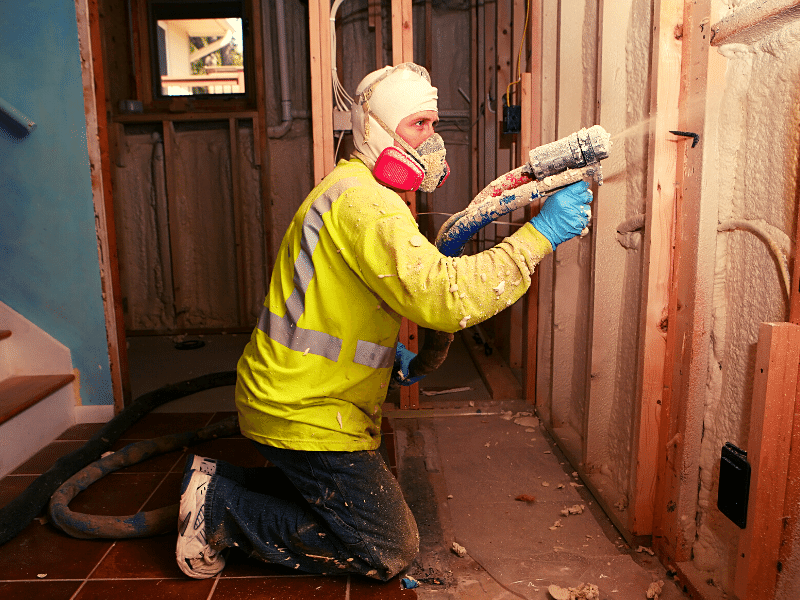
06 Oct Will Spray Foam Insulation Lower My Utility Bills?
Did you know that the typical home in the U.S. uses about 10% of its energy on heat? That may not seem like a lot, but it’s enough energy to power all of Google’s offices and data centers for a year. A great way to start improving the energy efficiency of your home is with an energy audit.
An energy audit is a simple and cost-effective way to identify potential areas in your home where you can make improvements to reduce your energy usage. Whether you live in an urban area or a rural one, keeping your house warm during the winter and cool during the summer is critical to reducing your utility bills and keeping your family safe.
The good news is that there are several simple changes you can make that will help reduce your heating and cooling costs significantly. One of these changes is spray foam insulation, which can reduce your energy usage by as much as 25% when installed correctly. We’ll explore more details about using spray foam to insulate your walls, as well as answer some commonly asked questions!
What is Spray Foam Insulation?
Spray foam insulation is exactly what it sounds like — a substance that is sprayed into and around your walls to help insulate them. This insulation is made up of two main ingredients.
First, there is a liquid, usually a mixture of water and chemicals, that is kept under pressure at all times. Next, there is a chemical known as a “foaming agent” that causes the liquid to foam and expand when it comes into contact with air. Once sprayed, these two ingredients react with each other and create a substance that is around five times denser than normal construction-grade foam.
This makes it an extremely effective insulating material. Spray foam insulation can be applied in a number of different methods, but the most popular is through the use of a spray foam insulation machine. These machines are typically large and installed inside the walls of a building, and they can spray a significant amount of insulation in a short amount of time.
Once applied, the spray foam expands and hardens, forming a strong, airtight seal that can improve energy efficiency and lower energy bills for years to come. Spraying foam on the inside and outside of your home’s walls can also help reduce noise from outside, as well as offer some soundproofing inside.

How does spray foam insulation work?
The goal of using spray foam insulation is to reduce airflow through your walls and make it harder for heat to travel through them. Spray foam insulation is an extremely effective way of doing this. First, a canister of foam will be applied to every crevice, crack, and hole in your walls.
This helps fill any voids in your walls and seals off any unnecessary airflow through your walls. Next, the foam expands and fills any voids in the walls, further reducing any gaps or spaces that could allow hot or cold air to travel through. The result is a wall that is significantly better at blocking hot and cold air from escaping your home!
Spray foam insulation is also a great way to seal off any holes or cracks in your walls, which can often be a problem for older homes. Small gaps and cracks in walls can allow unwanted pests to travel through your home and make pests like rodents more difficult to control.
How much will spray foam insulating lower my utility bills?

Spray foam insulation can lower your utility bills in a variety of ways. It can reduce the amount of energy you use by decreasing the amount of heat that escapes through your home’s walls, and it can also help you make better use of the energy you do use by making it easier to control the temperature inside your home.
Since spray foam insulation is installed on the inside and outside of your home’s walls, it can help prevent temperatures on both sides of your home’s walls from rising or falling too quickly. This can make it easier to keep your home at a comfortable temperature, even if you have to turn up the heat or AC for just one room. Spray foam insulation can also improve the energy efficiency of your HVAC system by making it easier to maintain the temperature inside your home.
Foam insulation can reduce the amount of energy your HVAC system has to use to keep your home at a comfortable temperature, which can save you money in the long run. Additionally, spray foam insulation can help prevent condensation inside your ductwork, which is a major cause of energy loss in many homes. This makes it easier to maintain the temperature of your HVAC system and can save you hundreds or even thousands of dollars per year on your energy bills.
Is spray foam insulation worth the cost?
Spray foam insulation is an investment that will pay for itself in both energy savings and reduced repair costs. The upfront cost of buying and installing spray foam insulation is higher than traditional methods of insulation, but it lasts much longer and can potentially lower your monthly energy bills.
One study found that, on average, homeowners who use spray foam insulation end up saving over $300 per year on their utility bills. This may appear to be a significant investment at first, but you can use cost-saving measures like installing duct insulation, using low-flow faucets, and replacing high-energy appliances to help reduce the cost. In many cases, these measures may more than makeup for the difference in upfront costs.
It can also be used to seal off and repair leaky areas, which can save you money in the long run. If you seal off problem areas before they become major leaks, you can significantly reduce your repair costs. The same is true of installing foam insulation. It’s easier and more cost-effective to seal off your walls with spray foam insulation before any problems arise than to try to repair a major leak when it occurs.
Why is Spray Foam Insulation so effective at lowering bills?
Spray foam insulation is so effective at lowering utility bills because it helps prevent three common causes of heat loss in homes: air infiltration, duct leaks, and thermal bridging. Air infiltration is the loss of heat through cracks and holes in the walls of your home, but foam insulation helps seal off these cracks and holes to prevent this loss of heat.
Duct leaks occur when warm air escapes from your ductwork and travels around the rest of your home. Spray foam insulation can help prevent this by preventing warm air from escaping through the ducts and filling in any gaps around the ductwork. Thermal bridging is when heat travels through your walls, and spray foam insulation can help prevent this by sealing off the studs and other wooden parts of your walls and filling in any gaps or voids.
Are there any downsides to using spray foam insulation?
Spray foam insulation may be great at reducing your energy use and lowering your utility bills, but it’s important to note that not all types of foam insulation are the same. Some brands of foam insulation contain hydrofluorocarbons (HFCs), a type of ozone-depleting chemical (ODC) that can contribute to global warming and be harmful to the environment.
Using ODC-free foam insulation, like CertainTeed All-Climate Plus, helps you avoid this problem and ensures that your insulation is safe for both you and the planet. Spray foam insulation also requires extensive and careful installation. Improper installation can create air leaks, trap moisture in your walls, and cause other issues that can be expensive to fix.
Make sure you hire a contractor who has experience installing spray foam insulation and check references from other customers to make sure they had a positive experience.

Conclusion
Spray foam insulation is one of the most effective ways to lower your utility bill and stay comfortable in your home. It’s so efficient, in fact, that it can reduce your utility bills by as much as 25% when installed correctly.
It is so effective at lowering bills because it creates a near-total air barrier that prevents warm air from escaping and cold air from coming inside. It’s a significant investment, but it’s worth it in the long run since it can lower your utility bills by as much as 25%.





No Comments